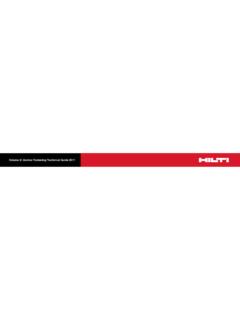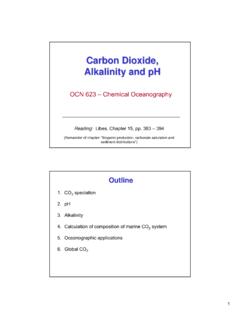Transcription of GUIDELINE FOR THE MANAGEMENT OF NAUSEA AND …
1 1 GUIDELINE FOR THE MANAGEMENT OF NAUSEA AND VOMITING IN PREGNANCY AND HYPEREMESIS GRAVIDARUM _____ 2019 Lowe SA, Bowyer L, Beech A, Robinson H, Armstrong G, Marnoch C, Grzeskowiak L. These are the recommendations of a multidisciplinary working party convened by the Society of Obstetric Medicine of Australia and New Zealand. They reflect current medical literature and the clinical experience of members of the working party. The accompanying Executive Summary and Treatment Algorithms (1 and 2) summarise the key recommendations.
2 These should be read in conjunction with this complete GUIDELINE which also includes a Patient Information Leaflet and a template for an Individual Patient MANAGEMENT Plan. The authors declare there are no conflicts of interest. This GUIDELINE has been endorsed by the following organisations: Royal Australian and New Zealand College of Obstetrics and Gynaecology (RANZCOG) Royal Australasian College of Physicians (RACP) Australasian College for Emergency Medicine (ACEM) The Society of Hospital Pharmacists of Australia (SHPA) New Zealand Hospital Pharmacists Association (NZHPA) This GUIDELINE has been officially recognised as an Accepted Clinical Resource by The Royal Australian College of General Practitioners.
3 2 CONTENTS Section Page Introduction 3 Methods 3 Abbreviations 5 Definitions 7 Incidence and natural History 8 Causes 10 Investigations 11 Model of Care 14 Treatment 16 Intravenous Therapies 32 Termination of Pregnancy 35 Gestational Hyperthyroxinemia 38 Pregnancy and Neonatal Outcomes 41 Recurrence Risk 43 Preconceptual Counselling 44 References 45 MANAGEMENT Algorithm (Part 1) 60 MANAGEMENT Algorithm (Part 2) 61 Patient Information Sheet 62-65 Individual Patient MANAGEMENT Plan 66-67 3 Introduction The approach to the MANAGEMENT of NAUSEA and vomiting in pregnancy (NVP) and hyperemesis gravidarum (HG) in the current era is strongly reminiscent of the cultural attitudes towards the MANAGEMENT of pain in labour prior to the introduction of epidural anaesthesia in the 1970s.
4 Women and their families have been appropriately concerned about medication use in early pregnancy and doctors have been reticent to offer women therapy, being mindful of the impact of the thalidomide tragedy of the 1950-60s. Women have been expected to tolerate significant symptoms both physical and psychological because NVP is a normal and expected part of pregnancy. In a recent Norwegian study, focus groups indicated that women felt their distress due to NVP was trivialized by their doctors whilst the doctors appeared uncertain with respect to appropriate medical treatment of NVP (1).
5 Compounding this problem, the women themselves were sceptical towards the use of medicines while pregnant, and avoidance was sought despite being ill. Just as society adjusted to the medical advances that have allowed women to manage pain in labour, it is only appropriate that we change our attitudes through research, education and evidence based guidance to ensure women have access to appropriate, safe and timely MANAGEMENT for NVP and HG. Methods Evidence was sought from MEDLINE, EMBASE and PUBMED searches and based on an extensive review of this literature, a fully referenced GUIDELINE was written.
6 The quality of evidence was evaluated and the recommendations made according to NHMRC principles and described as per Table 1 (2). Where there was insufficient evidence, the expert opinion of the GUIDELINE group was sought and agreement reached by majority opinion. The recommendation terms include the terms should or must (where benefits of the recommendation exceed the harms), consider (where the quality of evidence was limited or the available studies demonstrated little clear advantage of one approach over another, or the balance of benefits to harm was unclear) and should not or do not or avoid (where there is either a lack of appropriate evidence, or the harms outweigh the benefits).
7 The authors were selected by the council of the Society of the Obstetric Medicine Group of Australia and New Zealand and represent a diverse group of physicians, obstetricians and a clinical pharmacist with expertise in these conditions. The GUIDELINE was also reviewed by midwives, general practitioners and other clinicians as well as consumers with an interest in NVP and HG. This included women with current or previous NVP or HG. 4 From this, the critical recommendations were derived along with a series of potentially auditable outcomes to create the accompanying Executive Summary.
8 These were then summarised and published as a SOMANZ Position Paper in the Australian and New Zealand Journal of Obstetrics & Gynaecology Table 1: Definition of recommendations and simplified levels of evidence (2) RECOMMENDATION DESCRIPTION Evidence based (EBR) Where sufficient evidence was available Consensus recommendations (CBR) Where there was insufficient evidence, the expert GUIDELINE development group made clinical consensus recommendations Clinical practice points (CPP) Important implementation and other issues (such as safety, side effects or risks)
9 Arose from discussion of evidence based or clinical consensus recommendations LEVELS OF EVIDENCE DESCRIPTION I A systematic review of Level II studies II A randomised controlled trial III Any non-randomised study(ies) including comparative study with concurrent controls, cohort, case-control, historical controls IV Case series 5 Abbreviations 5HT Five hydroxy tryptamine receptor inhibitors aOR Adjusted odds ratio BD Two times a day CI 95% Confidence interval: [ ] CNS Central nervous system CVC Central venous catheter CYP Cytochrome P450 EN Enteral nutrition EUC Electrolytes, urea, creatinine FBC Full blood count GER Gastroesophageal reflux GHT Gestational hyperthyroxinemia/Gestational hyperthyroidism GP General practitioner HCG Human Chorionic Gonadotrophin HG Hyperemesis gravidarum H.
10 Pylori Helicobacter Pylori hypoK Hypokalemia hypoMg Hypomagnesemia IM Intramuscular IQR Interquartile range IV Intravenous LFT Liver function tests M Muscarinic mcg Microgram NP NAUSEA in pregnancy without vomiting NV NAUSEA and vomiting NVP NAUSEA and vomiting in pregnancy OD/BD/TDS/QID Once /twice/three times/four times: per day OR Odds ratio PICC Peripherally inserted central catheter PO Oral 6 PUQE-24 Pregnancy-Unique Quantification of Emesis and NAUSEA scored over 24 hours QID Four times a day RCT Randomised controlled trial RR Relative risk SC Subcutaneous SGA Small for gestational age TDS Three times a day TFT Thyroid function tests TPN Total Parenteral Nutrition TPOAb/TRAb/TgAb Thyroid peroxidase/Thyroid receptor/Thyroglobulin: Antibody TSH Thyroid stimulating hormone 7 What are the definitions of NVP and HG?



